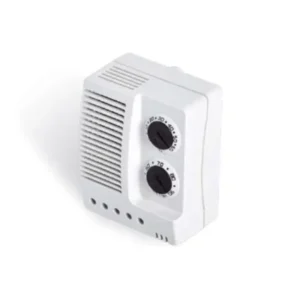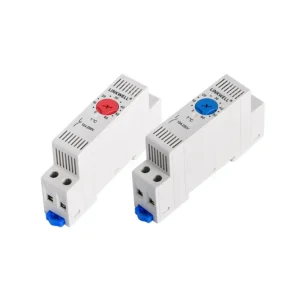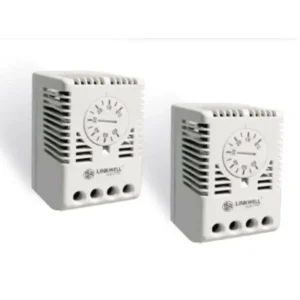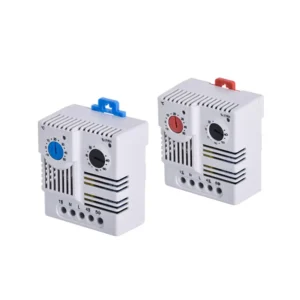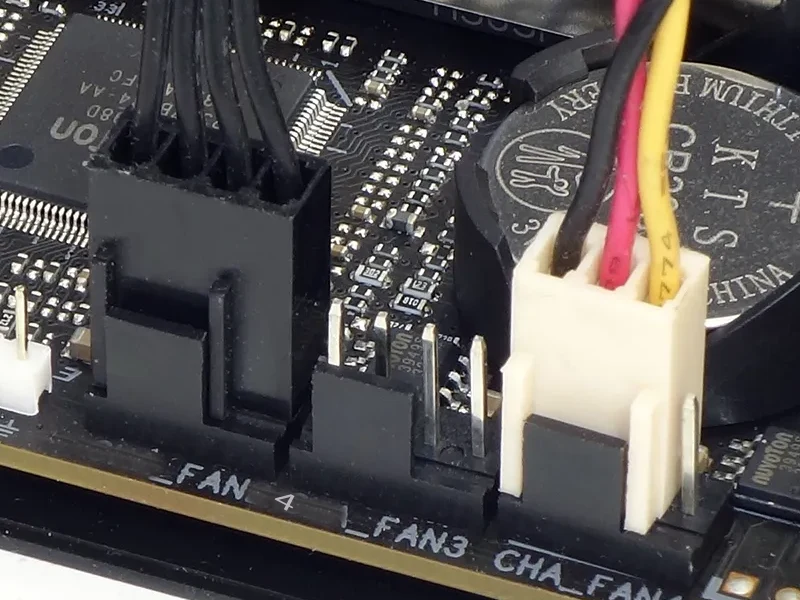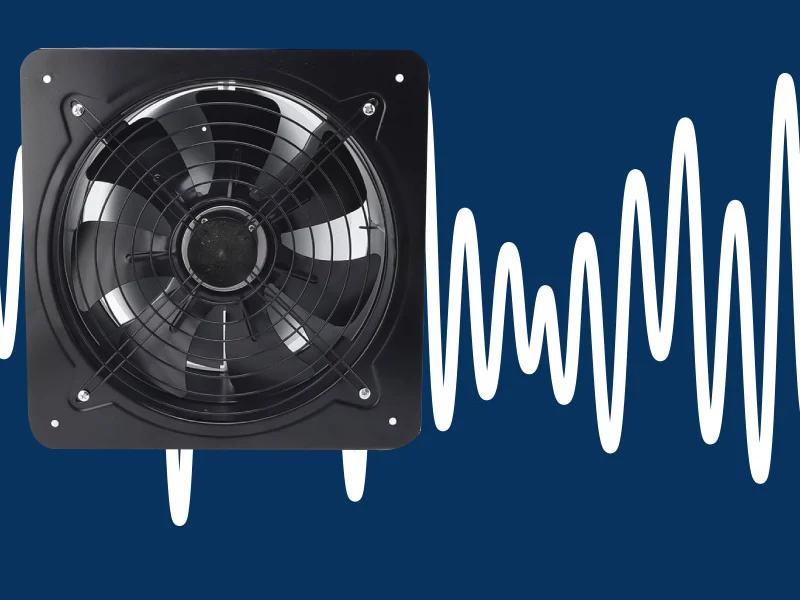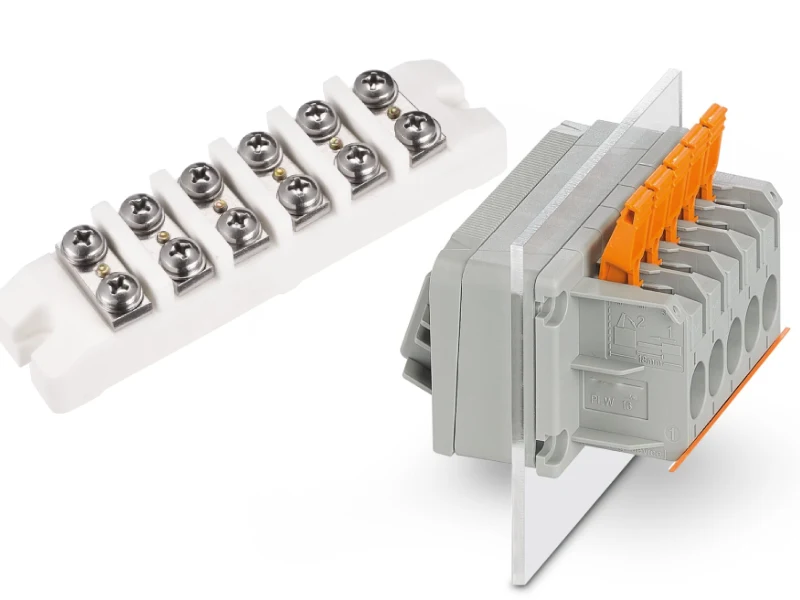If you want to keep your space comfortable and your equipment safe, you need to know the different types of thermostats. You’ll find options like manual, programmable, smart, and industrial models—each with its own primary use. Many people now upgrade to smart or programmable thermostats because they can cut energy costs by up to 20% a year and extend the life of your HVAC system.
The right choice matters, whether you’re managing a home, office, or industrial site. Linkwell offers reliable solutions for industrial needs, so you can focus on what matters most. Curious about how does a thermostat work or which types of thermostats fit your application? You’re in the right place.
Thermostats Key Takeaways
- Different thermostats fit different needs, from simple manual models to advanced smart systems with remote control.
- Programmable and smart thermostats help save energy and money by adjusting temperatures based on schedules or habits.
- Industrial thermostats like Linkwell’s offer precise control and protect equipment in tough environments.
- Choosing the right thermostat means matching it to your system type, daily routine, and budget for comfort and savings.
- Regular thermostat checks and proper selection can extend equipment life and prevent costly repairs.
Types of Thermostats
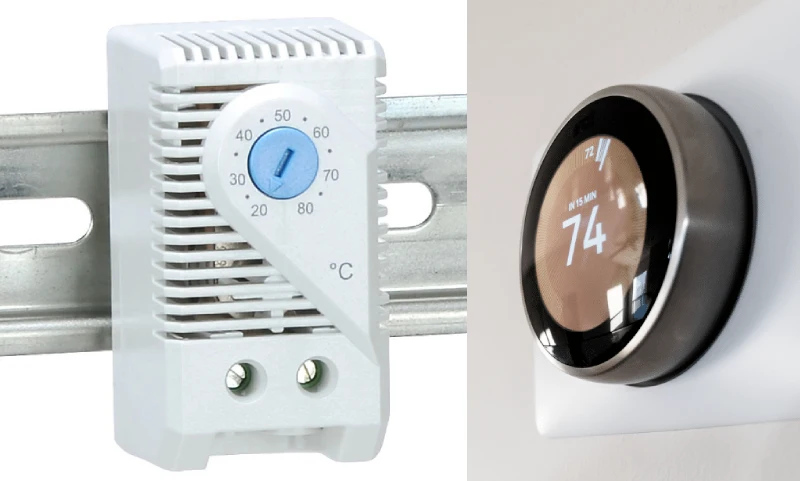
When you look at the different types of thermostats, you’ll see that each one fits a specific need. Some work best in homes, while others shine in industrial or commercial spaces. Let’s break down the main thermostat categories based on features, technology, and how you use them.
Recommended products
Hygrothermostats
A hygrothermostat controls both temperature and humidity. You’ll often find these in places where moisture can damage equipment, like control cabinets or telecom Electrical Enclosures. In floor heating systems, hygrothermostats help keep the temperature steady and prevent cold spots. They also improve indoor air quality by reducing dust and keeping the air comfortable. Many industrial sites use hygrothermostats to protect sensitive electronics from condensation. Linkwell offers reliable hygrothermostat solutions for industrial and commercial applications, making sure your equipment stays safe and efficient.
Mechanical Thermostats
Mechanical thermostats are the classic type you might remember from older homes or schools. They use bimetallic strips or gas-filled bellows to sense temperature changes. When the room gets too hot or cold, the strip bends or the bellows expand, flipping a switch to turn your heating or cooling system on or off. This is a simple answer to the question, “how does a thermostat work?” You get reliable, straightforward control without any digital screens or programming.
- You’ll see mechanical thermostats in places where you need something tough and easy to use.
- They work well in environments with power fluctuations because they don’t rely on electronics.
- These thermostats are great for basic heating or cooling systems, especially where precise temperature isn’t critical.
If you want a non-programmable thermostat that just works, mechanical thermostats are a solid pick. Linkwell’s industrial mechanical thermostats offer robust performance for control panels and enclosures.
Electronic Thermostats
Electronic thermostats, sometimes called digital thermostats, use sensors and microchips to control temperature. You get more precise control compared to mechanical thermostats. Many electronic models let you set exact temperatures, and some even show the current temperature on a digital display.
| Feature | Electronic Thermostats | Mechanical Thermostats |
|---|---|---|
| Temperature Accuracy | High (within 1°F) | Moderate (can vary 5-10°F) |
| Features | Programmable, digital display, remote access | Simple dial or switch |
| Energy Efficiency | High | Moderate |
You’ll find electronic thermostats in homes, offices, and industrial settings where you want better control and energy savings. Linkwell provides electronic thermostats for industrial cabinets, helping you keep equipment safe and energy costs low.
Manual Thermostats
A manual thermostat is the simplest type you can get. You turn a dial or press a button to set your desired temperature. There’s no programming or fancy features—just direct control. Manual thermostats are common in older homes and places where you want something easy to use. If you don’t want to deal with schedules or apps, a non-programmable thermostat like this is perfect.
- Manual thermostats are popular in homes with central forced-air systems.
- They’re also used in small offices or workshops where you want quick, hands-on control.
You might choose a manual thermostat if you value simplicity and immediate results.
Programmable Thermostats
Programmable thermostats let you set a schedule for your heating or cooling system. You can program different temperatures for mornings, evenings, weekends, or vacations. This helps you save energy because your system only runs when you need it.
- Programmable thermostats are great for busy families, offices, and even industrial sites.
- You can set them to lower the heat at night or when you’re away, then warm things up before you return.
- Many programmable thermostats now come with touchscreens and easy-to-use menus.
If you want to cut energy costs and enjoy more comfort, a programmable thermostat is a smart upgrade. Linkwell offers programmable options for industrial applications, so you can keep your equipment protected and your energy bills in check.
Note: Programmable thermostats can help you save up to 20% on your energy bills by reducing unnecessary heating or cooling.
Smart and Wi-Fi Thermostats
Smart thermostats and wi-fi thermostats take convenience to the next level. You can control them from your phone, tablet, or even with your voice. These thermostats learn your habits and adjust the temperature automatically. Many smart thermostats connect to your home or building’s Wi-Fi, so you can make changes from anywhere.
- Smart thermostats use sensors and machine learning to optimize comfort and energy savings.
- Wi-fi thermostats let you monitor and adjust settings remotely, which is perfect for managing multiple locations or large buildings.
- In industrial settings, smart thermostat solutions help you track energy use, spot problems early, and keep everything running smoothly.
Some models even work with voice assistants like Alexa or Google Assistant. If you want the latest features, look for a communicating thermostat that can talk to other smart devices in your building. Linkwell’s industrial wi-fi thermostats offer remote monitoring and control, making them ideal for modern factories and data centers.
Did you know? ENERGY STAR certified smart thermostats can enter low-power standby modes and provide real-time data to help you save even more energy.
When you choose between the different types of thermostats, think about your needs. Do you want simple control, or do you need advanced features like remote access and scheduling? Linkwell offers a full range of industrial thermostat solutions, so you can find the perfect fit for your application.
Different Types of Thermostats for Industrial Use
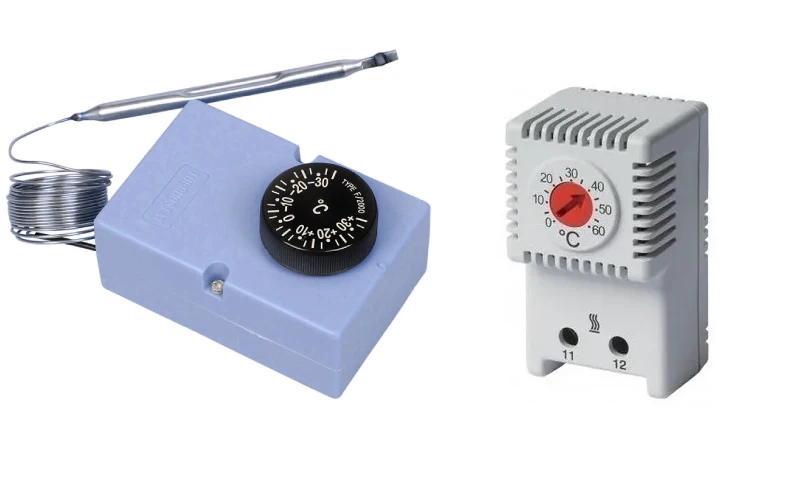
Industrial environments need reliable temperature control to keep equipment safe and processes running smoothly. You’ll find that the right thermostat can make a big difference in energy savings, safety, and equipment lifespan. Let’s look at the main types you’ll see in factories, control cabinets, and other industrial settings.
Line Voltage Thermostats
Line voltage thermostats work directly with high-voltage systems, usually 120V or 240V. You’ll often use these to control electric heaters, ventilation fans, or cooling units. These thermostats connect straight to the power line, so they can handle heavy-duty loads.
Key Features:
- SPST or SPDT switching for flexible control
- Fast-response hydraulic temperature sensors for quick adjustments
- Wide temperature range, perfect for many industrial needs
- Compact design with easy-to-read front knobs
| Feature | Description |
|---|---|
| Sensor Type | Bulb & Capillary remote sensor (60-inch) |
| Construction | Stainless Steel |
| Function | Refrigeration (cooling) |
| Switch Type | Single Stage SPST |
| Temperature Range | -30°F to 90°F (±2°F differential) |
| Rating | NEMA 1 (dust, splash protection) |
| Voltage | 24VAC to 600VAC |
| Amperage | 16/22A |
You’ll see line voltage thermostats in ventilation, heating, and cooling systems. They’re great for places where you need simple, rugged control. Linkwell’s heating and cooling thermostats fit right into these applications, offering reliable performance and easy installation.
Tip: If you need to control electric heaters or fans in a cabinet or enclosure, a line voltage thermostat is a solid choice.
Low Voltage Thermostats
Low voltage thermostats operate at 24 to 30 volts. You’ll find these in central HVAC systems, control cabinets, and even in some industrial automation setups. These thermostats use temperature sensors to monitor conditions and send signals to relays or control boards.
Why choose low voltage thermostats?
- They provide precise temperature control, which helps protect sensitive equipment.
- You can use them with programmable or smart features for better energy management.
- They improve safety by reducing the risk of electrical hazards.
| Industrial Equipment Type | Control and Safety Benefits of Low Voltage Thermostats |
|---|---|
| Medium and High Voltage Switch Cabinets | Prevent overheating/overcooling, extend equipment lifespan, improve reliability. |
| High and Low Voltage Control Cabinets | Maintain optimal temperature, prevent component damage, reduce maintenance costs. |
| Terminal Boxes and Ring Network Cabinets | Avoid insulation aging, maintain stable temperature, enhance safety. |
| Box-Type Substations | Regulate internal temperature, improve efficiency, lower energy use. |
| Circuit Breaker Mechanism Boxes | Maintain optimal temperature for sensitive parts, reduce failures. |
| Instrument Boxes | Stabilize temperature for instruments, enhance measurement accuracy. |
Linkwell’s low voltage thermostats and enclosure heaters help you keep your control panels and cabinets at the right temperature, even in tough environments.
Note: Low voltage thermostats often work with advanced temperature sensors, giving you more accurate control and better protection for your equipment.
Capillary and Data Logging Thermostats
Capillary thermostats use a bulb and capillary tube filled with fluid to sense temperature changes. When the temperature shifts, the fluid expands or contracts, triggering a switch. These thermostats are known for their accuracy and fast response.
Data logging thermostats take things a step further. They not only control temperature but also record data over time. This helps you track trends, spot problems early, and prove compliance with safety standards.
Benefits:
- High accuracy and precision in temperature measurement
- Easy integration with electronic control systems
- Remote sensing and wide temperature range
- Fast response times and long-term durability
| Feature/Benefit | Description/Implication for Process Control Industries |
|---|---|
| Calibrated temperature settings | Precise temperature control for process accuracy |
| Bulb and capillary assemblies | Durable materials for harsh environments |
| Manual or automatic reset options | Flexibility and safety |
| Interrupts power at set temperature | Reliable and safe temperature regulation |
| Circuit opens if thermal element fails | Prevents hazards and protects equipment |
| Multiple mounting configurations | Versatile installation in different setups |
You’ll often use these thermostats in process control, refrigeration, and automation. Linkwell’s industrial thermostats use advanced temperature sensors and can be customized for your specific needs.
If you need to monitor and control temperature with high precision, capillary or data logging thermostats are your go-to options.
Mini-Split and Zoned Thermostats
Large industrial spaces rarely have the same temperature needs everywhere. Mini-split and zoned thermostats let you control different areas independently. You can set one temperature for a server room and another for a workshop, all from a single system.
Advantages:
- Independent temperature control for each zone
- No ductwork needed, so installation is flexible and less invasive
- Reduces energy waste by only conditioning occupied spaces
- Quiet operation, perfect for noise-sensitive areas
- Programmable options for detailed scheduling
- Mini-split systems use outdoor and multiple indoor units, each with its own thermostat.
- Zoned thermostats let you adjust temperatures based on occupancy and usage.
- These systems work well in data centers, offices, and manufacturing plants with varying climate needs.
Did you know? Using zoned thermostats can cut energy costs and improve comfort by matching temperature to each area’s needs.
Linkwell’s programmable thermostats and enclosure heaters support zoned control, helping you manage temperature efficiently across your facility.
Linkwell Thermostats and Enclosure Heaters
Product Features
When you choose Linkwell thermostats and enclosure heaters, you get products built for tough jobs. These devices come with top certifications like UL, CE, and RoHS, so you know they meet strict safety and quality standards. Some models even carry ATEX and IEC/EN 60079 certifications for hazardous locations, making them perfect for demanding industrial sites. You can pick from a wide range of options—adjustable temperature ranges, color-coded dials, and even private label branding. Linkwell lets you customize voltage, size, airflow, and more, so your solution fits your exact needs. The durable, high-impact plastic and vented designs help prevent overheating and keep your equipment safe.
Tip: You can match the thermostat’s dial color to your brand or use color coding to avoid mix-ups during maintenance.
Applications
You’ll find Linkwell thermostats and enclosure heaters in all kinds of industries. They protect sensitive electronics in wind farms, EV charging stations, and power distribution cabinets. In control panels and telecom enclosures, these products keep temperatures steady, stopping condensation and frost before they cause trouble. If you work in oil and gas, renewable energy, or manufacturing, you’ll see how these devices help your systems run smoothly—even in extreme cold or heat. Linkwell’s solutions also support continuous operation in places with lots of dust, vibration, or humidity.
Advantages
Linkwell products give you peace of mind by protecting your equipment and cutting down on downtime. The thermostats automatically switch heating or cooling on and off, so you avoid overheating, freezing, or moisture buildup. This keeps your electrical components safe from corrosion and shorts. The enclosure heaters maintain a steady temperature, which reduces stress on your gear and lowers the risk of sudden failures. You also save energy thanks to smart, programmable controls and efficient designs. With Linkwell, you get reliable, customizable, and certified solutions that help your business stay productive and safe.
Choosing the Right Thermostat
When it comes to choosing the right thermostat, you want a solution that fits your system, your daily routine, and your budget. Let’s break down what you should look for so you can find the best type of thermostat for your needs.
Compatibility
Start by making sure your new thermostat matches your existing HVAC or enclosure system. Here’s a quick checklist to help you avoid headaches:
- Identify your HVAC system type—central, ductless, heat pump, or something else.
- Check the voltage. Most modern thermostats use low voltage (24V), but older systems might need high voltage.
- Look for a C-wire if you want a smart thermostat. Some models need it for continuous power.
- Match the wiring and staging requirements. Multi-stage systems need thermostats that support them.
- Make sure the thermostat supports your energy source—electric, gas, or oil.
- Consider the age of your system. Older units may not work with newer thermostats.
- Think about installation. Some setups need a pro, especially if you’re upgrading to advanced features.
Tip: Always check the manual or ask an expert if you’re not sure about compatibility. Linkwell’s team can help you pick the right industrial or enclosure thermostat for your setup.
Lifestyle and Application Needs
Your daily routine and work environment play a big role in choosing the right thermostat. Here’s how different types fit different needs:
- If you want simple, hands-on control, a manual thermostat works well.
- A programmable thermostat lets you set schedules, perfect for predictable routines at home or in the office.
- Smart thermostats give you remote control and learning features, great for busy or changing schedules.
- Zoned and mini-split thermostats help you manage different areas with unique temperature needs.
- In industrial settings, precision and reliability matter most. Look for thermostats with accurate sensors and safety features.
| Thermostat Type | Best For |
|---|---|
| Manual | Simple control, older homes |
| Programmable | Scheduled comfort, energy savings |
| Smart | Remote access, dynamic schedules |
| Zoned/Mini-Split | Multiple zones, industrial or large spaces |
Note: For enclosure heating and cooling, use normally closed thermostats for heaters and normally open for coolers. Set the right temperature points to avoid condensation and equipment damage.
Budget and Value
You want a thermostat that fits your budget but also delivers value over time. Manual models cost the least but offer basic features. Programmable thermostats range from $25 to $150 and help you save money with energy-efficient settings. Smart thermostats cost more upfront—usually $150 to $300—but can lower your bills with advanced controls and remote access.
| Thermostat Type | Cost Range (Device) | Value Summary |
|---|---|---|
| Manual | $20 – $50 | Lowest cost, basic control |
| Programmable | $25 – $150 | Good balance of price and automation |
| Smart | $150 – $300 | Higher cost, best for long-term savings |
Think about installation costs, too. Sometimes, paying a little more upfront means bigger savings later. If you’re not sure which option is right, reach out to Linkwell for expert advice and custom solutions.
Choosing the right thermostat means looking at your system, your routine, and your budget. With the right choice, you’ll enjoy comfort, safety, and savings for years to come.
Choosing the right thermostat makes a big difference. You’ll find that:
- Residential thermostats work best for homes and small spaces.
- Commercial models handle bigger buildings and complex energy needs.
- Industrial thermostats, like Linkwell’s, deliver precise control and reliability for tough environments.
Matching your thermostat to your space helps you save energy, protect equipment, and avoid costly repairs. Many customers have seen fewer breakdowns and longer equipment life after switching to Linkwell’s certified solutions. Need help or a custom fit? Reach out to Linkwell’s experts for advice.
FAQ
What’s the difference between a mechanical and an electronic thermostat?
Mechanical thermostats use physical parts like bimetallic strips to sense temperature. Electronic thermostats use sensors and digital displays for more precise control. You’ll find electronic models easier to program and more accurate for most applications.
Can I use the same thermostat for heating and cooling?
Yes, many thermostats work for both heating and cooling. Just check the product specs. Linkwell offers models that switch between modes automatically, so you don’t have to worry about changing settings when the seasons change.
How do I know if my thermostat is compatible with my system?
Always check your system’s voltage and wiring. Most homes use low voltage (24V), but some older or industrial systems need line voltage. If you’re unsure, ask a professional or reach out to Linkwell for help.
Why should I use a thermostat in an electrical enclosure?
A thermostat keeps your enclosure at a safe temperature. It prevents overheating and stops condensation from damaging your electronics. You’ll protect your equipment and avoid costly repairs or downtime.
How often should I replace or check my thermostat?
You should check your thermostat every year. If you notice temperature swings or your system runs nonstop, it might be time for a replacement. Most thermostats last 5–10 years, but regular checks keep everything running smoothly.

